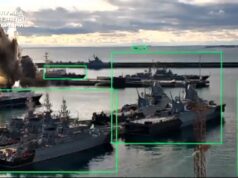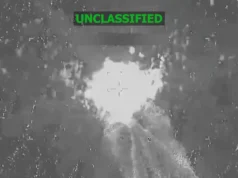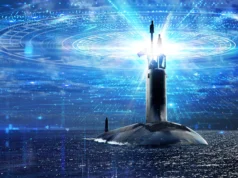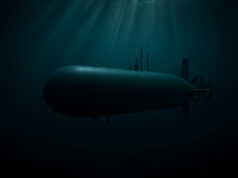Two NATO warships have docked in Riga, Latvia, in a port visit that highlights the Alliance’s continuing presence in the Baltic Sea and its commitment to regional security, the UK Defence Journal understands.
The ships, Standing NATO Maritime Group One (SNMG1) flagship HNLMS De Ruyter of the Royal Netherlands Navy and the German Navy replenishment vessel FGS Rhön, will remain in Riga through the weekend.
NATO described the visit as part of its support to the ongoing Baltic Sentry initiative, a mission that focuses on monitoring and protecting maritime infrastructure across the region.
SNMG1 is one of NATO’s four standing maritime groups, maintained at high readiness to respond to a wide range of missions. The Alliance said these groups provide “a continuous and credible presence in key regions, including the Baltic Sea.” The group is able to conduct collective defence, deterrence, and crisis response, and its presence in Riga is intended to demonstrate NATO’s capacity to operate across multiple theatres.
Commodore Arjen Warnaar, Commander SNMG1, stated: “NATO’s presence in Latvia is a tangible symbol of our commitment to the security of this region. We are here to show that NATO is united, present, and ready.”
While in port, the crews will engage with their Latvian naval counterparts, strengthening cooperation and regional partnerships. NATO said the visit is also an opportunity for logistical resupply and crew rest before the task group resumes patrols.
Baltic Sentry, the initiative currently supported by SNMG1, places particular emphasis on safeguarding Critical Undersea Infrastructure (CUI). NATO described these patrols as a way to “increase maritime situational awareness and information sharing among Allies, deterring threats to subsea cables, pipelines, and other infrastructure essential to regional security.”
The deployment of HNLMS De Ruyter and FGS Rhön to the Baltic comes after recent patrols by SNMG1 in the High North and Barents Sea. NATO noted that these activities illustrate the operational reach of its standing groups, which regularly move between the Arctic and Baltic to maintain deterrence and reassure Allies.
According to NATO, the visit to Riga underscores both its immediate presence in the Baltic and its broader strategic posture in Northern Europe, combining routine port visits with sustained at-sea operations in support of Alliance security.













